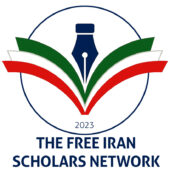By Jila Andalib, IT Specialist & Iran Political and Human Rights Analyst
Published in CT Mirror, August 7, 2025

Here in Connecticut, many of us in the Iranian-American community carry a pain that never really goes away. Some of us lost parents. Others lost siblings. I lost my childhood friend. She was only in her 20s and pregnant when she was executed in an Iranian prison. Her crime? Believing in a free Iran.
This isn’t ancient history. It was 1988. That summer, more than 30,000 political prisoners were killed across Iran. Most were young. Many were already serving time. The regime called them in, one by one, and asked if they still supported the opposition. The majority were supporters of Mojahedin-e-Khalq (MEK). If they said yes, they were sent to the gallows. Families were never told where their loved ones were buried.
The reason was simple: self-preservation. The regime feared it was losing its grip on power and responded the only way it knew how, by eliminating those it saw as a threat.
These killings were not random. They were ordered by Ruhollah Khomeini’s fatwa and carried out by so-called “death commissions” made up of clerics. One of the men who sat on these commissions was Ebrahim Raisi, who went on to become president of Iran decades later. His involvement is well documented, yet he was rewarded with the highest offices instead of facing justice.
The site of many of these horrors was the notorious Evin Prison. It’s important to remember that Evin was not a creation of the current regime. It was built under the Shah. For decades, it has held tens of thousands of political prisoners. Crown or Turban, the cruelty has remained the same.
That massacre went largely unnoticed by the world —until it was too late. Now, decades later, we’re seeing signs that something terrible may be happening again. And this time, it isn’t too late. Not yet.
Just days ago, two political prisoners, Behrouz Ehsani and Mehdi Hassani —both MEK members —were executed in Ghezel Hesar Prison. They had spent years behind bars for their beliefs. The timing wasn’t random. Since the 12-day war ended, the Iranian regime has escalated its crackdown. More arrests. More executions. More prisoners quietly transferred to unknown locations. Families are left in the dark. Over 612 people have been executed in Iran so far this year, making it one of the world’s top executioners.
For those of us who remember 1988, this feels all too familiar. The secrecy. The transfers. The silence. We’ve seen it before. We know where it leads. The regime in Tehran fears something deeply: its own people. Over the past few years, protests have erupted again and again. After the killing of Mahsa Amini in 2022, Iranians poured into the streets demanding change. Their message was clear. They no longer accept dictatorship. And the regime’s answer has been brutal repression.
What gives me hope is that this time, more people are paying attention. In 2017, our Connecticut U.S. Reps. Rosa DeLauro and Joe Courtney took a stand. They co-sponsored a bipartisan resolution in Congress condemning the 1988 massacre and calling for an international investigation. The resolution described what happened in chilling detail: “Teenagers and pregnant women… imprisoned merely for participating in peaceful street protests… executed in groups… their bodies disposed of in mass graves.” It was an important recognition, and one that mattered deeply to the Iranian-American community.
Another resolution introduced in 2023 reaffirmed that call. It urged the U.S. government to press for justice and prevent the regime from committing new atrocities.
More recently, U.S. Reps. John Larson and Joe Courtney joined over 220 House members in backing House Resolution 166, which supports the Iranian people’s demand for a democratic, secular republic and calls for accountability for the mass executions of political prisoners. The resolution references a 2024 UN report that described the 1988 massacre as “the most egregious human rights abuses of our living memory,” and confirmed that high-ranking Iranian officials conspired to commit crimes against humanity.
These efforts are powerful. They tell the Iranian regime: we’re watching. And they tell families of victims: your loved ones are not forgotten. But we need more. The world must not wait for the mass graves to be discovered. This time, the signs are clear. This time, we still have a chance to stop it.
There is time to act. Not years. Maybe not even months. But there is time. If the international community, human rights organizations, and democratic governments raise their voices now, we can stop another tragedy before it begins.
Here in Connecticut, we’ve seen what leadership and compassion can do. And we have a role to play again. Let’s be the ones who listened when it mattered. Let’s be the ones who spoke up when it mattered.
